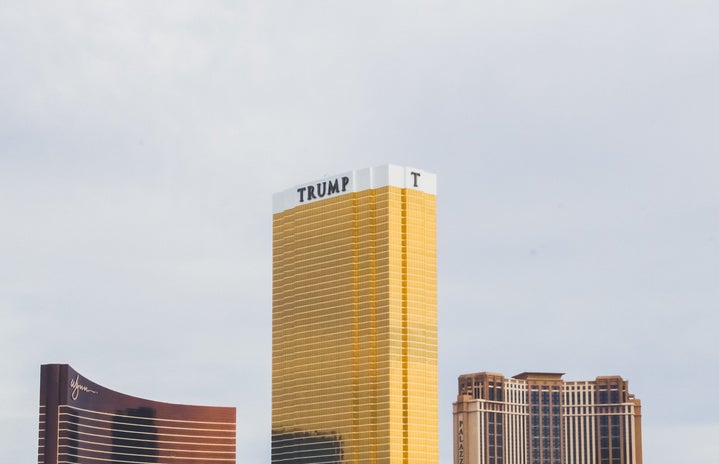On the day after Donald Trump was inaugurated into the highest office in the United States, millions of people (though mostly women) marched across the globe as part of the Women’s March on Washington and its sister marches. While it may have appeared to be a protest of the new president, the mission for the march was to stand together and send the message that women’s rights are human rights. People came in huge numbers to show their solidarity, not only for women’s rights, but for civil rights among other issues that have been threatened by the new administration.
I attended the march with a group of friends, and from the moment we arrived at the Vienna metro station, the anticipation for the march was infectious. Already at the first stop on the orange line, there were vast crowds of people waiting to get metro passes, and we collectively filled up every car on the train. It was moving to see so many people on their way to stand together, many of whom traveled great distances to come to D.C. to have their voices heard. We were standing next to a group of people who had flown across the country from San Francisco and two women who had traveled from Ithaca New York. The metro cars, like the city streets of Washington would become, were a sea of pink and pussyhats.
In Washington D.C. alone there was an estimated 500,000 protestors present to show their support of one another and to show that they were willing to fight for what they believe in. Over and over again, speakers reminded the crowds that “we are America” and that the new president works for us. One of my favorite chants ended with the line “This is what democracy looks like,” reminding us that dissent, when peaceful, is patriotic. In D.C., though there were hundreds of thousands of people present, there were no arrests, unlike the day before. Some people have suggested that the peace was kept because of the privilege of the huge numbers of white women marching alongside other groups; regardless, the relative lack of hostility in the crowd was representative of the intention not to sink to the level of the hateful rhetoric that defined the election cycle.
It wasn’t only in D.C., however, that women and people of all backgrounds marched in protest of the threat to human and environmental rights. There were sister marches across the globe in all seven continents (even an expeditionary team in Antarctica took part!). One of the organizers of the march addressed the crowd with a message from the organizer of a sister march in Germany. The organizer from Germany gave a pointed reminder that she knew first hand from living in Berlin that walls didn’t work.
An incredible range of speakers at the rally in D.C. spoke about not only resistance and empowerment, but radical love. Speakers came from a variety of backgrounds and included the likes of Gloria Steinem, Cecile Richards of Planned Parenthood, multiple US senators, and performers like Alicia Keys. While speakers highlighted different issues, from the protection of undocumented citizens to reproductive rights to the environment, they overlapped in reminding protestors that marching alone was not enough. Showing solidarity at the marches was incredible and empowering, but continued activism is necessary for resistance and positive change. This brings us to the movement that is stemming from the march.
Time Magazine has called this election “a tipping point.” More people than ever are thinking about running for office to represent their communities and have their voices heard directly. Emily’s List, an organization that trains and helps Democratic, pro-choice women get elected into office, held a training workshop for 500 women on supporting and becoming female candidates the day after the march. Midterm elections are coming up in 2018, and people will need to continue to fight for what they want to see in their nation by coming out to vote for their representatives in the house and senate.
The Women’s March Organizers haven’t stopped with the march and are instead releasing 10 actions to take for the first 100 days of Trump’s presidency. The first action is to send postcards to your representatives which can be downloaded from their website. In his speech, documentary filmmaker Michael Moore spoke about staying involved and had the crowd repeat the phone number for the capitol switchboard that when called, will redirect the caller to the line for their senators or house representatives: (202) 224-3121. Constituent calls do work, it’s just a matter of making them. With accessible scripts online and widespread news about current issues, there is no good reason not to call your legislators.
In summary, this movement is taking hold and doesn’t look like it’s going away anytime soon. A lot of people that have never protested before are becoming engaged in the political system and looking for ways to get involved. This is a movement of becoming and staying engaged in the country’s politics that affects everyone in the US and many people worldwide. More and more protests are cropping up to focus on specific issues and people are not planning on staying silent. This is not a sign that democracy is dead, this is a sign that it’s working.
Of course, the resistance must remain organized to contain the disorder of a nation where many people, even on the National level are trying to work directly against and sometimes around the president. Chaos could be unifying, but only if we work with each other, remembering that everyone in this nation deserves equal consideration.
Diverse communities and people make up the United States and make it stronger despite language and actions that suggest otherwise. What Donald Trump didn’t anticipate is that his divisive rhetoric won’t tear the country apart – it will bring it together.

